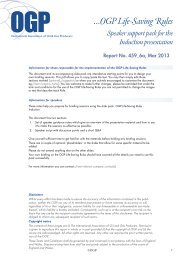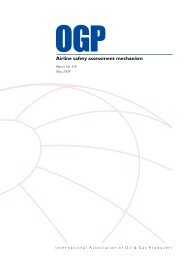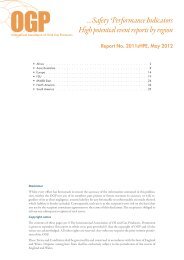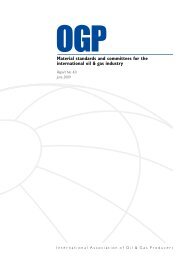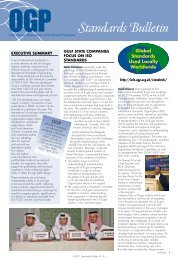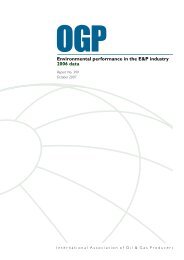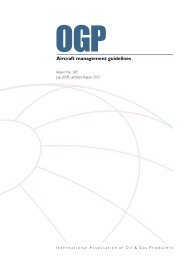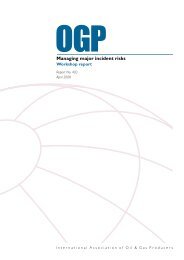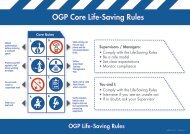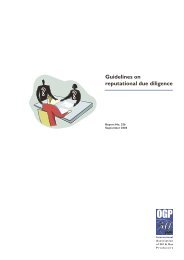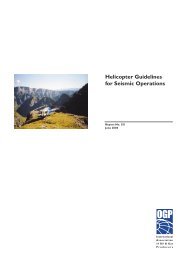Helicopter guidelines for land seismic & helirig operations - OGP
Helicopter guidelines for land seismic & helirig operations - OGP
Helicopter guidelines for land seismic & helirig operations - OGP
You also want an ePaper? Increase the reach of your titles
YUMPU automatically turns print PDFs into web optimized ePapers that Google loves.
<strong>Helicopter</strong> <strong>guidelines</strong> <strong>for</strong> <strong>land</strong> <strong>seismic</strong> & <strong>helirig</strong> <strong>operations</strong><br />
9 Flight <strong>operations</strong> safety<br />
9.1 General<br />
9.1.1 A daily planning meeting must be held to discuss the <strong>operations</strong>. The pilots should<br />
participate at these meetings. It is recommended such meetings are held in the<br />
evening, allowing more preparation time <strong>for</strong> the next day’s activities.<br />
9.1.2 A map of the operating area should be maintained up to date, showing:<br />
1. Geography and topography of the area.<br />
2. Infrastructure, roads, airports, etc.<br />
3. The <strong>seismic</strong> programme and all prepared <strong>land</strong>ing sites/helipads.<br />
4. All identified hazards, such as power lines, high towers, etc.<br />
This map should be available in the aircraft, radio room and flight planning office. If<br />
a flight tracking system is used, the same map should be used as background on the<br />
monitor screen.<br />
9.1.3 For longer distance transit, the use of agreed safe flight routes/corridors is strongly<br />
recommended. These should avoid built up areas, large bodies of water, high altitude<br />
terrain and other identified hazards. In jungle covered areas, it is recommended that<br />
safe flight routes follow the main rivers, even if this constitutes an increase in flight<br />
distance. Note that adherence to such agreed corridors may eventually reduce search<br />
and rescue (SAR) ef<strong>for</strong>ts and improve the chances of successful SAR.<br />
9.1.4 For multi destination flights in medium and heavy helicopters, the use of a cabin<br />
attendant/load master should be considered to:<br />
1. Operate doors and cargo hatches, avoiding the need <strong>for</strong> the pilots to do this.<br />
2. Ensure passenger discipline (seat belt, etc).<br />
3. Manage internal cargo.<br />
Refer to section 3.2.2. <strong>for</strong> training requirements <strong>for</strong> such a cabin attendant.<br />
9.1.5 A documented procedure should be available <strong>for</strong> flight planning and authorization<br />
and changes in flight plans. (Ref 2.2.1.2). As a minimum this procedure should<br />
describe:<br />
1. Who has the authority to issue flight plans and/or to modify these.<br />
2. Written <strong>for</strong>mat to be used <strong>for</strong> flight plans, original to be issued to pilot and copy<br />
retained by flight planner and copies to radio room and engineer.<br />
3. Flight plans to be discussed with pilot be<strong>for</strong>e take off.<br />
4. Pilot will have the ultimate authority in deciding whether to execute a flight as<br />
proposed in the plan or not.<br />
© <strong>OGP</strong><br />
25



